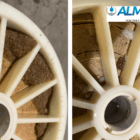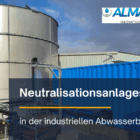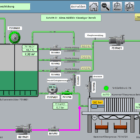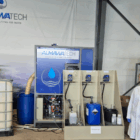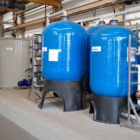Flocculation is an important process in water and wastewater treatment in which fine, colloidal particles in the water are brought together to form larger aggregates, so-called flocs. These flocs are easier to separate and can be separated by sedimentation in CP systems, filtration or flotation be removed. Flocculation builds on the previous coagulation process, in which the charges of the suspended particles are neutralized so that the particles begin to coalesce.
Flocculation plays an important role in the treatment of industrial wastewater and in the municipal wastewater sector, particularly in industries such as the paper industry, textile processing, the food industry and metal processing. The use of flocculants ensures improved wastewater clarification and helps to comply with limit values.
Table of contents
Technical background to flocking
Flocculation is a physico-chemical process in which the addition of flocculants (usually polymers) to aggregate the particles in the water into flocs. The flocculants bind to the particles and mechanical movement causes the particles to clump together and form larger flocs that are easy to settle or separate.
Mechanisms of flocculation
Diffusive flocculation:
- The movement of small particles in water is influenced by Brownian motion, which causes particles to collide with each other in a random manner. This effect is particularly pronounced with small particles and colloids and supports the formation of primary flocs.
Mechanical flocculation:
- Slow stirring or mixing promotes an even distribution of the flocculants and a higher probability of collision between the particles. This leads to a controlled formation of larger flocs.
- The stirring speed is crucial, as too high a stirring speed can destroy the flakes that have already formed, while too low a speed does not sufficiently promote flake formation.
Chemical flocculation:
- Chemical flocculants, such as polymers and polyacrylamides, have a large molecular size and can wrap themselves around the particles so that they bind the individual particles together. These so-called bridging agents strengthen the bond between the flocs and create stable structures.
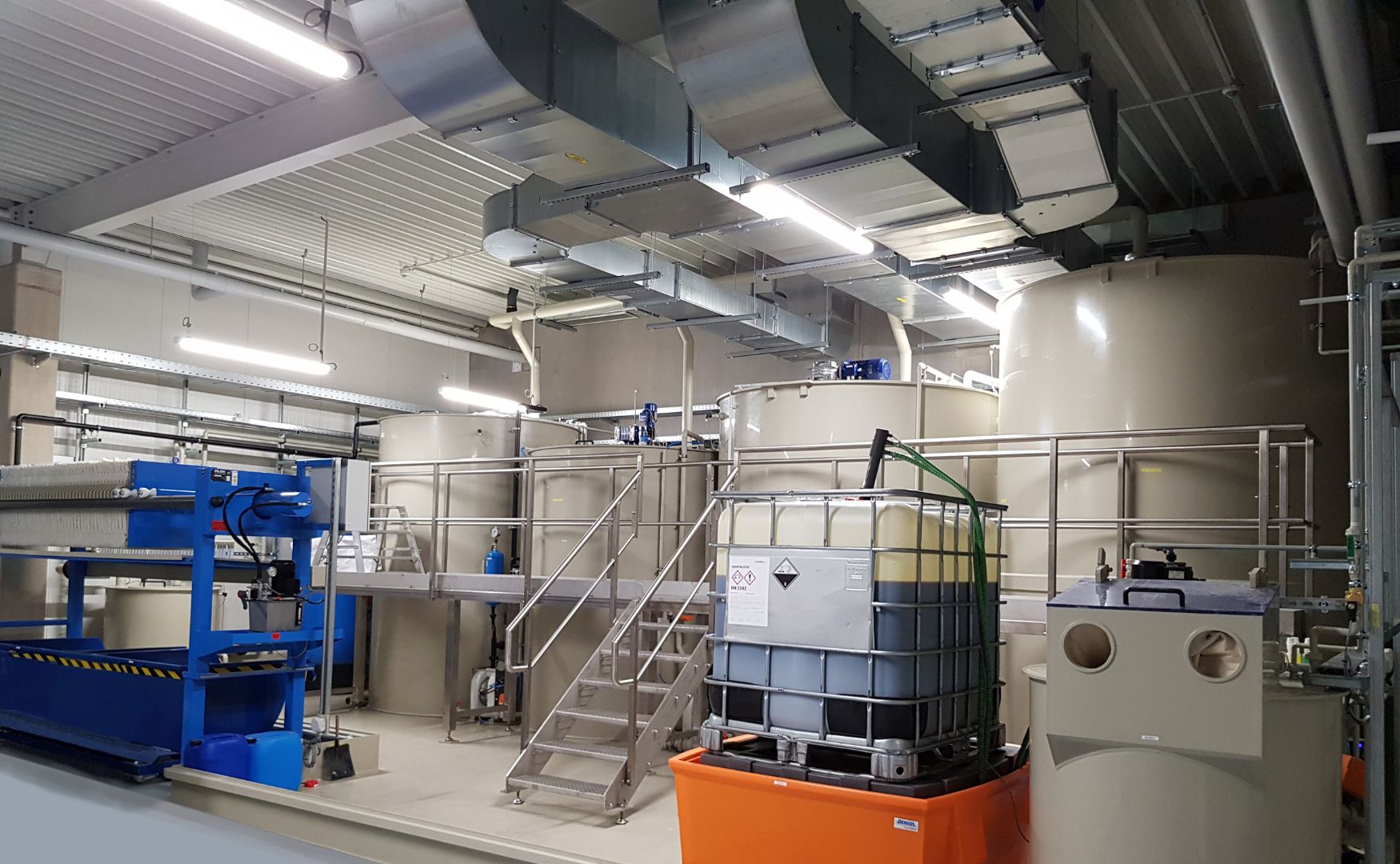
Photo: CP plant (precipitation and flocculation plant) ALMA Chem MCW for coagulation and elimination of pollutants
Flocculants: types and how they work
Flocculation requires specific chemicals that promote particle binding and floc formation. These flocculants can be divided into different types, depending on their charge and chemical structure:
- These flocculants carry a negative charge and are particularly suitable for wastewater with positively charged particles, as is often the case in metal processing. Anionic polymers are also used in the pulp and paper industry to promote solids separation.
- These flocculants are positively charged and are used in wastewater with predominantly negatively charged particles. They are particularly suitable for sludge treatment and dewatering as they form a strong bond with organic substances. Cationic flocculants are frequently used in the food and beverage industry as well as in municipal wastewater treatment.
- These polymers have no electrical charge and can be used in a wide pH range. They are often used as a supplement to ionic flocculants and are suitable for wastewater in which the charge of the particles varies.
- These flocculants are long chain molecules that have a high binding capacity. They act by bridging between the particles and produce stable, large flocs that are easy to separate. Polymer flocculants, such as polyacrylamides, are particularly effective in sludge conditioning and dewatering.

Photo: ALMA NeoDAF flotation system for coagulation and elimination of pollutants
Applications of flocculation in practice
Flocculation is a universal step in water and wastewater treatment and can be used in almost all industries where suspended solids and colloidal impurities need to be removed.
Drinking water treatment:
- In drinking water treatment, flocculation is used to remove turbidity, organic substances and heavy metals. After coagulation and flocculation, the flocs can be removed by sedimentation in CP systems, flotation or filtration, which improves the clarity and quality of the drinking water.
Industrial wastewater treatment:
- In the metal processing and electroplating industry, flocculation is used to remove heavy metals and dyes. The addition of cationic and anionic flocculantsenables efficient separation and compliance with environmental standards.
- In the pulp and paper industry, flocculation is used to separate organic substances and fibers and improve wastewater quality. Flocculation reduces the COD load (chemical oxygen demand) and contributes to compliance with wastewater limits.
Food and beverage industry:
- In the food industry, especially in dairy and beverage processing, wastewater with high organic loads is produced. Cationic flocculants are used here to separate fats, oils and organic compounds.
Sludge conditioning and dewatering:
- In sewage treatment plants and in the treatment of industrial sludge, flocculation improves the dewatering properties of the sludge. The addition of flocculants reduces the water binding of the sludge, resulting in a more compact and easier to dewater mass. This makes handling easier and reduces disposal costs.
Advantages and challenges of flocking
Advantages:
- Effective solids separation: flocculation enables the reliable removal of fine particles that would otherwise remain suspended.
- Wide range of applications: Flocculants can be adapted to a variety of wastewaters and solids, making the process very flexible.
- Reduced operating costs: Effective flocculation leads to faster and more efficient solids separation and reduces the need for post-treatment processes.
Challenges:
- Optimizing the dosage: The optimal dosage of flocculants is crucial in order to achieve maximum efficiency. Overdosing can lead to over-stabilization, while underdosing makes floc formation incomplete.
- Sensitivity to pH value and temperature: Flocculation is sensitive to fluctuations in pH value and temperature, which requires precise process monitoring.
- Sludge formation: Flocculation generates a considerable amount of sludge that has to be dewatered and disposed of in chamber filter presses, which can result in additional disposal costs.
Flocculants from ALMAWATECH: ALMA AQUA Wastewater
ALMAWATECH offers a wide range of flocculants under the brand name ALMA AQUA Wastewater brand, including cationic, anionic and non-ionic polymers that are specially optimized for the requirements of water and wastewater treatment. Our flocculants are tailored to the specific requirements of your wastewater and offer an efficient solution for particle and solids separation. In addition, we offer laboratory analyses to determine the optimal composition and dosage of flocculants and provide you with customized solutions for your wastewater treatment processes.
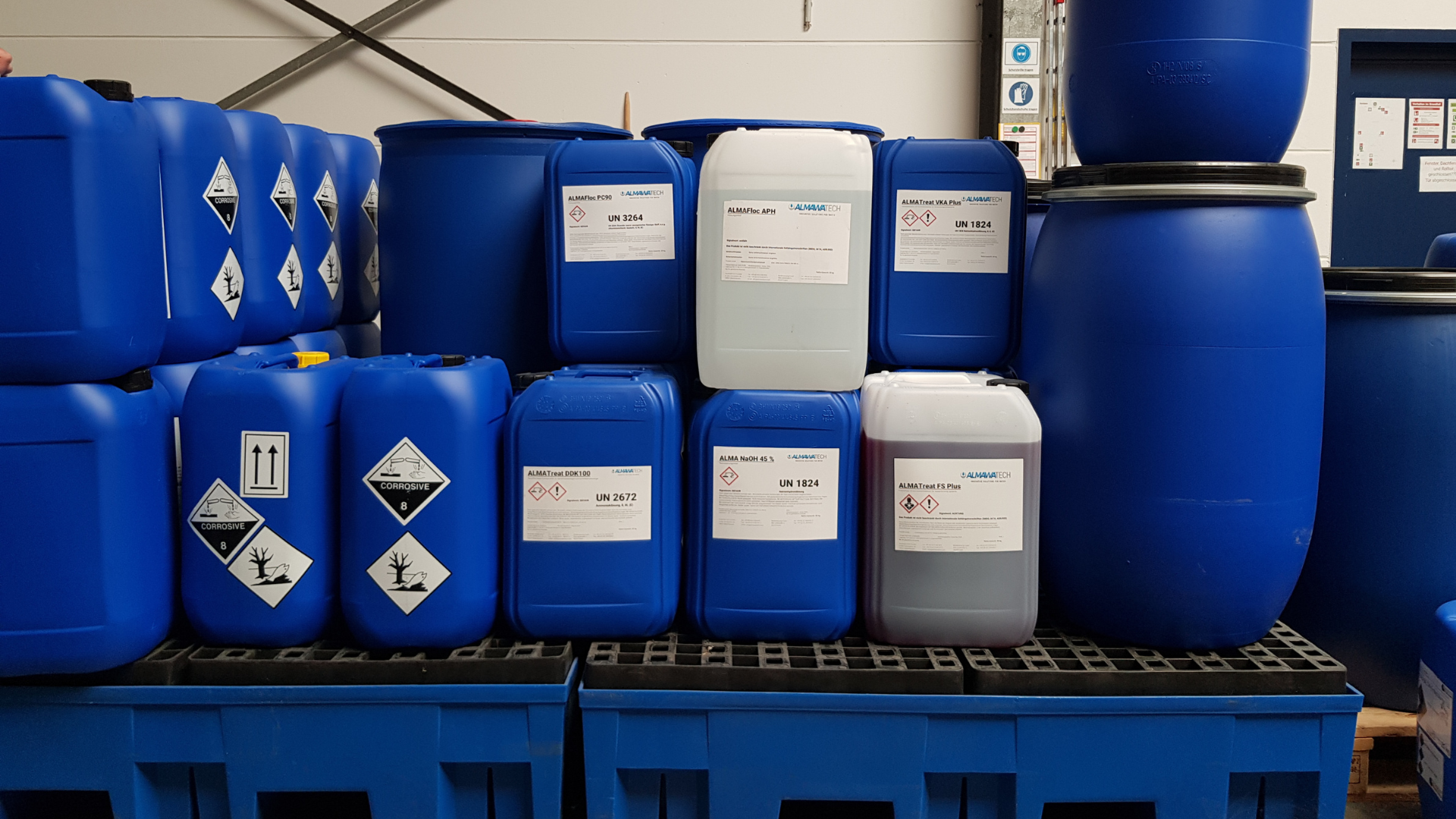
Photo: Application-specific operating resources ALMA AQUA wastewater: precipitants, flocculants, neutralizing agents and other products
Conclusion
Flocculation is a fundamental process in water and wastewater treatment and enables the efficient removal of turbidity, organic impurities and heavy metals. The correct selection and dosage of flocculants can significantly improve wastewater quality and reduce operating costs. ALMAWATECH supports you with a wide range of products and application-specific advice to optimize your flocculation processes and achieve the highest standards in water quality.
For further information on our products, please feel free to contact us at any time!


